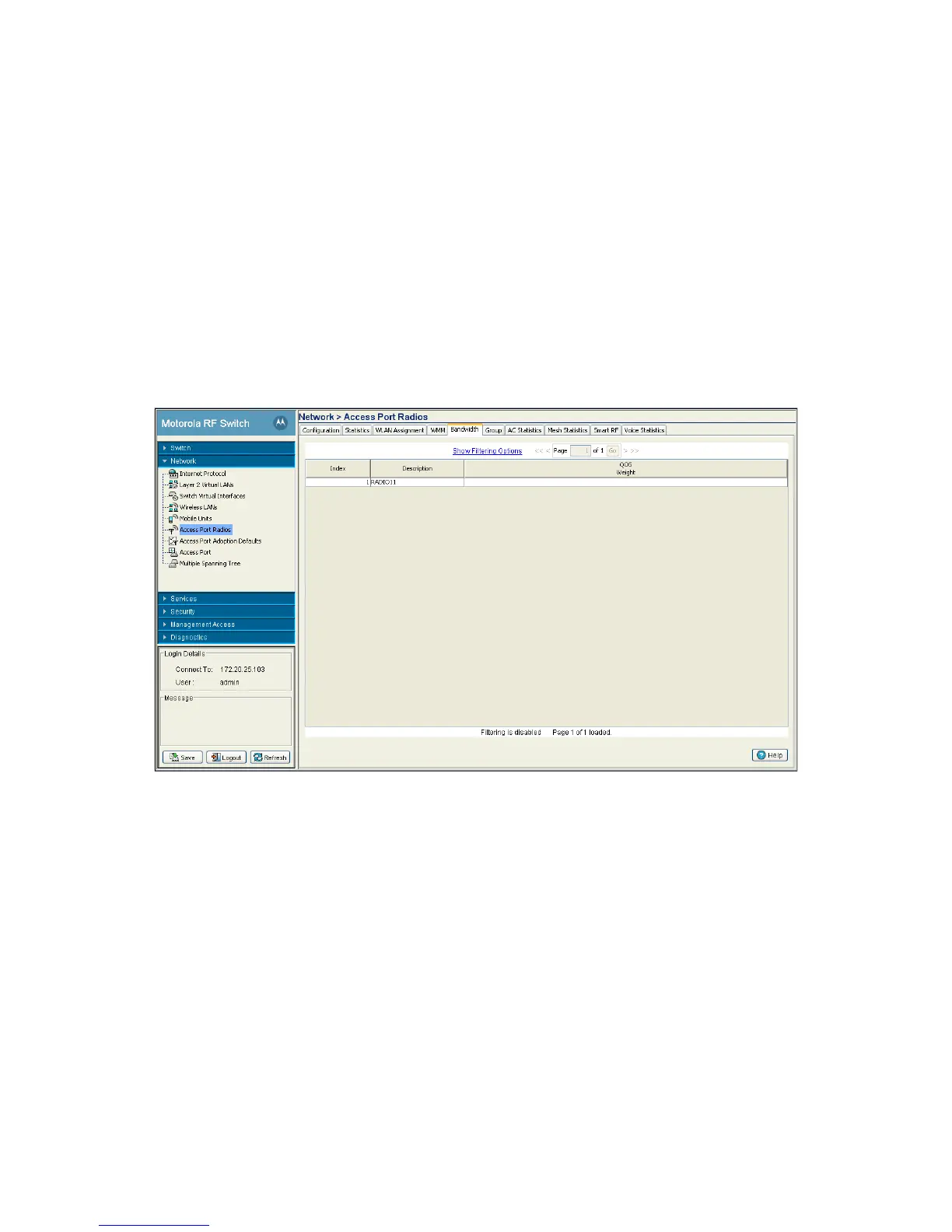4-114 Motorola RF Switch System Reference Guide
9. Click OK to use the changes to the running configuration and close the dialog.
10.Click Cancel to close the dialog without committing updates to the running configuration.
4.7.5 Configuring Access Point Radio Bandwidth
Refer to the Bandwidth tab to view the QoS weight associated with each radio when added to a WLAN.
The weight represents the switch priority assigned to the traffic transmitted from the radio for the WLAN.
For information on revising the weight assigned to each radio in respect to its intended operation within its
assigned WLAN, see Editing the WLAN Configuration on page 4-25.
To view existing radio bandwidth weight settings:
1. Select Network > Access Port Radios from the main menu tree.
2. Click the Bandwidth tab.
Bandwidth information displays per radio with the following data:
4.7.6 Configuring Radio Groups for MU Load Balancing
In order to do MU load balancing, radios must be grouped. Usually, two radios with similar characteristics
and geographically close to each other can be grouped together.
By default, a radio is not in any group and the load balancing algorithm would not apply to it.
Index The Index is the numerical index (device identifier) used with the device radio. Use
this index (along with the radio name) to differentiate the radio from other device
radios.
Description The displayed name is the name used with the device radio. Use this name (along
with the radio index) to differentiate the radio from other device radios.
QoS Weight Displays the Quality of Service weight for the AP. The default value for the weight
is 1. AP QoS will be applied based on the QoS weight value with the higher values
given priority.

